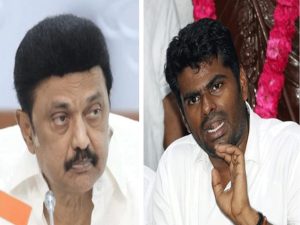
If one does a census of popular Hindi cinema, Dalits and their issues will constitute a minority. So, it is refreshing to see an action entertainer woven around caste atrocities carried out in the name of divine justice in the hinterland. It is heartening to find B.R. Ambedkar’s photo inside a home, attached to something as ubiquitous but meaningful as a mirror.
“Vedaa” brings forth a narrative centered on Vedaa Bairwa (Sharvari), a Dalit student of law who aspires to break social barriers by joining a college boxing club. However, the so-called custodians of social order deem her fit only for menial tasks, reserving the actual sport for those higher up the caste ladder. Vedaa’s only ally is Abhimanyu (John Abraham), an ex-Army officer dealing with personal grief, who has returned to his wife’s village to serve as a boxing trainer in a local college.
Set in the backdrop of a patriarchal society where political progressiveness stands on the fragile foundation of undisturbed caste hierarchy, the duo faces off against the head of a caste panchayat, Jitendra Pratap Singh (Abhishek Banerjee). Jitendra, although appearing modern, is torn between his progressive thoughts and the regressive traditions upheld by his father (Ashish Vidyarthi in a chilling role) and his younger brother, who acts as the local muscle enforcing caste-based dominion.
The situation intensifies when Vedaa’s brother embarks on a relationship with an upper-caste girl, inciting Jitendra’s wrath and leading to catastrophic consequences.
Nikkhil Advani, once known for his portrayal of romantic tales, ventures into grim territory with this socially conscious action drama. Through Abhimanyu, he crafts a hero who, amidst moral chaos, rides stoically on a monstrous bike against bleak landscapes. Abhimanyu’s quiet resolve and stern demeanor complement Vedaa’s fiery quest for justice, making them compelling protagonists in this battle for human dignity.
Vedaa’s determination to seek justice through legal avenues is juxtaposed against Abhimanyu’s pragmatic approach born from his military background. Their differing perspectives on fighting caste oppression anchor the narrative, inviting viewers to introspect on the multilayered issues of social equality.
However, the film navigates complex territory as Advani seems uncertain about the extent to which he can incorporate social realism within the framework of a John Abraham-led action film.
. Balancing cerebral content with action sequences, Advani nourishes the script with a high-energy diet typical of action films but attempts to infuse it with meaningful dialogues about equality. This results in extended action scenes occasionally interrupted by discussions on constitutional rights, creating a somewhat disjointed flow.
Interestingly, the film claims to draw from real-life stories yet heavily adapts them to fit the Bollywood mold. Writer Aseem Arora’s screenplay conveys sharp performances, with John Abraham delivering a characteristically intense portrayal of Abhimanyu. Someone in the film aptly remarks that Abhimanyu ‘ghoorta bahut hai’ (stares a lot), a trait that fits seamlessly with Abraham’s style. Sharvari, evolving with each role, delivers a commendable performance as Vedaa, although a bit more physical transformation would have complemented her boxing sequences.
The action choreography throughout the film is robust, leaving audiences on the edge of their seats. Yet, the core conflict – the fight against caste-based injustice – sporadically loses focus amidst the high-octane action, compelling viewers to wait for a more profound resolution to emerge. By the climax, Abhimanyu, a silent atheist, starts quoting from the Mahabharat, merging tradition with contemporary struggles.
The film’s attempt to balance serious socio-political issues with mainstream appeal sometimes falters. It becomes evident that the creators are cautious not to pigeonhole Abhimanyu as the sole savior of the Dalit girl. This calculated approach, balancing the protagonist’s influence while honoring Vedaa’s central role, occasionally disrupts the film’s narrative flow. The film might have lost some of its sharper edges during its stint with the Censor Board, further exhibiting the filmmaking team’s in-between generational stance – attempting bold narratives while retaining conventional cinematic hooks like item numbers.
In conclusion, “Vedaa” resonates with its attempts at social commentary within the action genre, offering a reflective look at caste-related struggles. While it may not seamlessly blend its narrative elements, the film stands as a significant effort to address pertinent social issues within the realm of popular Hindi cinema. “Vedaa” is currently running in theatres.












